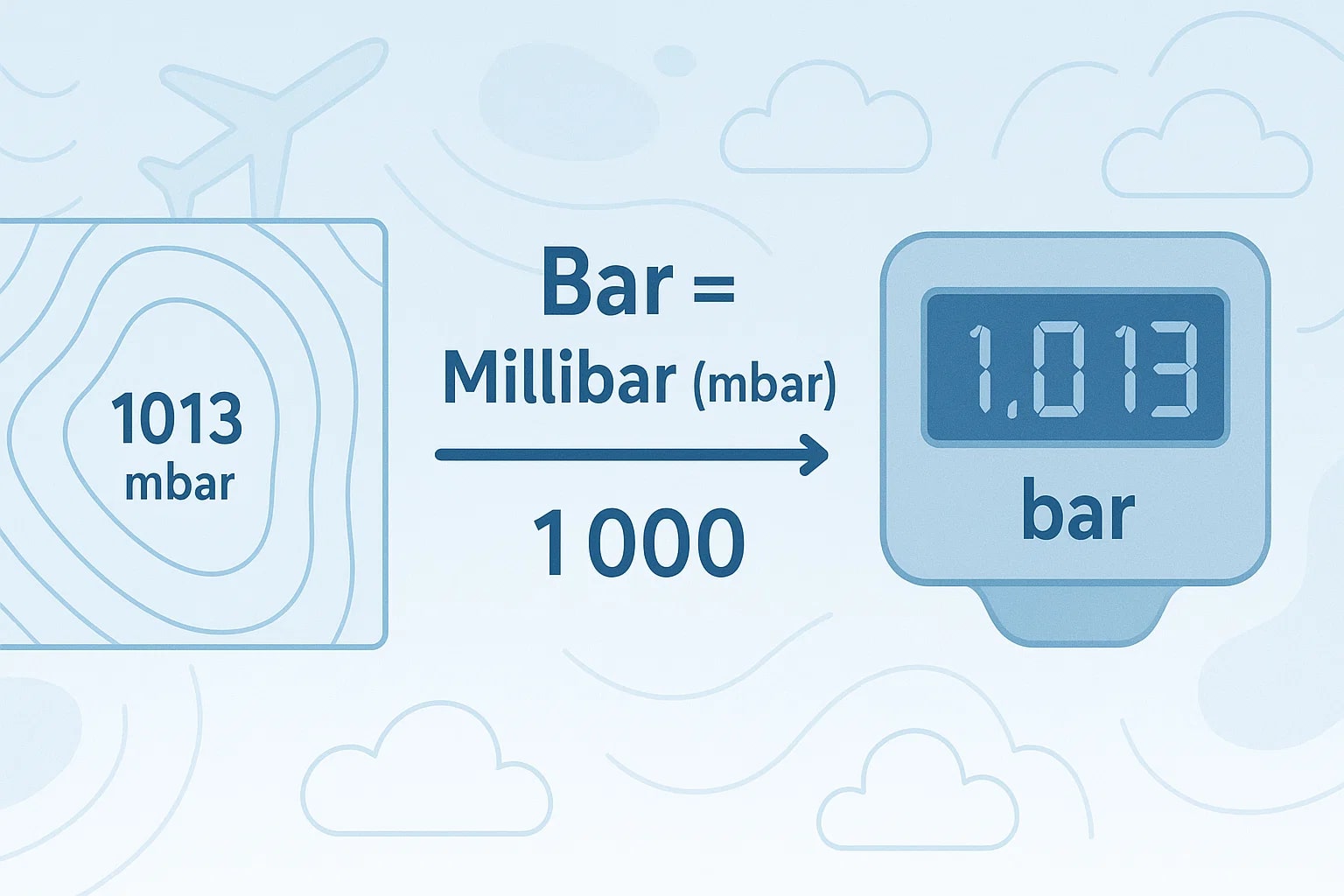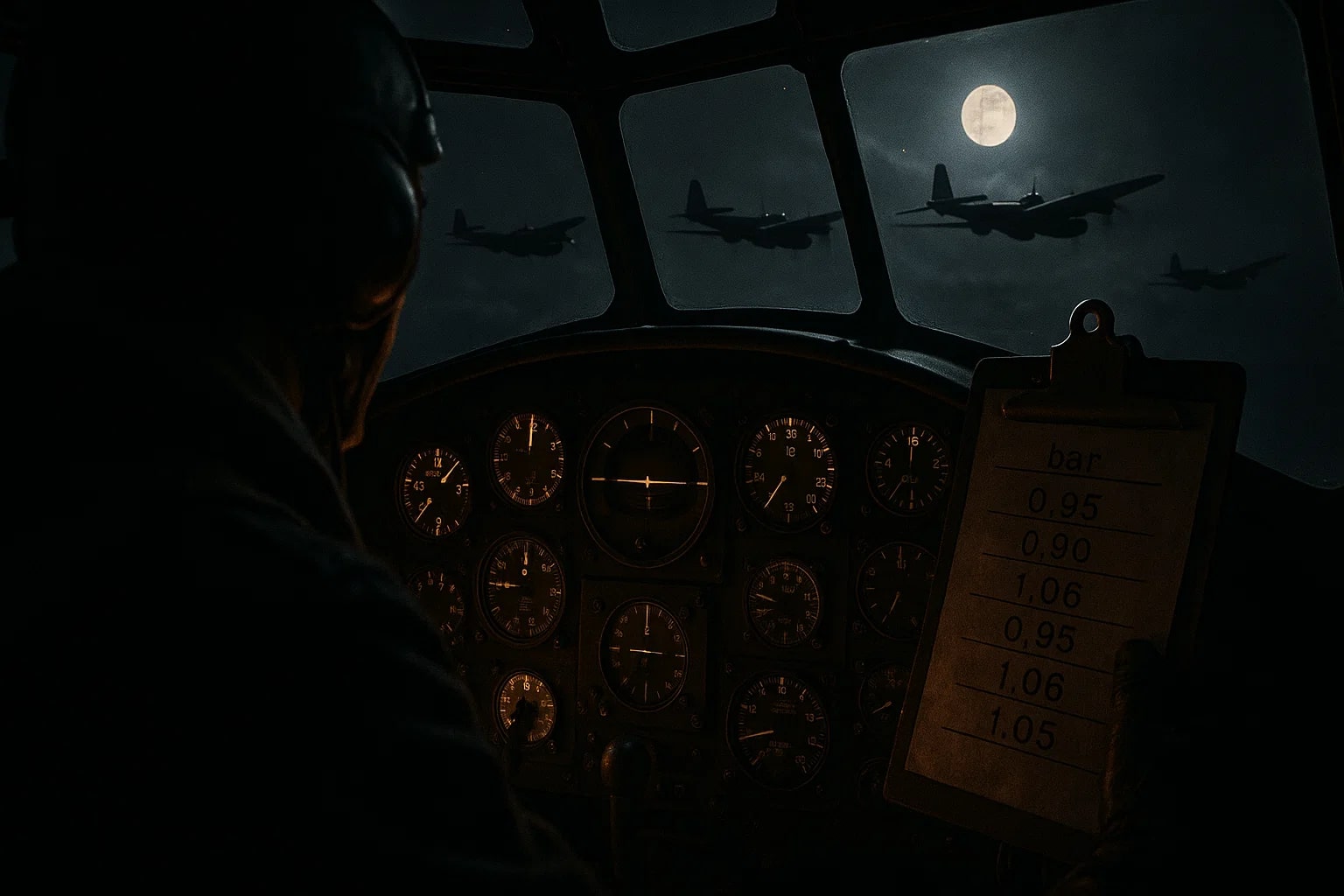millibar to bar – How to convert mbar to bar
The millibar (mbar) is widely used in meteorology, while the bar is common in engineering, diving, and industry. Converting millibar to bar helps connect weather forecasts with practical applications such as scuba diving, tire pressure, and fluid systems. This makes mbar to bar one of the simplest but most useful pressure conversions.
What is a millibar (mbar)?
A millibar equals 100 pascals. Meteorologists often use millibars to describe atmospheric pressure. Standard sea-level pressure is about 1013 mbar.
What is a bar?
A bar equals 100,000 pascals, or 1000 millibars. It is not an SI unit but is widely used in many industries. For example, car tire pressures and scuba tanks are often measured in bar.
How to convert millibar to bar
Bar = Millibar (mbar) ÷ 1000
Example:Bar = 2500 mbar ÷ 1000 = 2.5 bar

For instant calculations, the Conversion Tools can help. For related units, you can also try the Speed Converter.
Do you know?
-
About millibar: Weather maps often show pressure systems in millibars. A hurricane typically forms when central pressure drops below 980 mbar.
-
About bar: Scuba divers track their air tanks in bar. A full tank usually holds about 200 bar, equivalent to 200,000 mbar.
When Weather Changed Aviation
In the early 20th century, pilots began relying on barometric pressure to estimate altitude. Readings were given in millibars, but aircraft engineers preferred bar for mechanical gauges. To ensure accuracy, pilots and engineers had to convert between the two.
One famous case occurred during World War II, when bombers relied heavily on accurate altimeter readings to fly safely at night. Misinterpreting millibar readings as bar could have been catastrophic. By standardizing conversion methods — mbar to bar and back again — aviation improved its safety and reliability, laying the foundation for modern flight instruments.

A Small Shift With Big Impact
Converting millibar to bar is simple: divide by 1000. Yet this straightforward calculation connects meteorologists predicting storms with engineers designing safe equipment. From weather reports to scuba tanks, this conversion ensures that pressure data remains practical, clear, and useful across fields.

